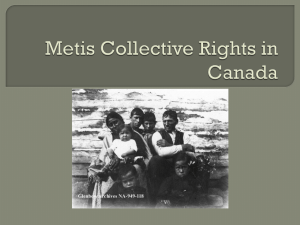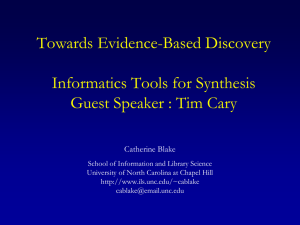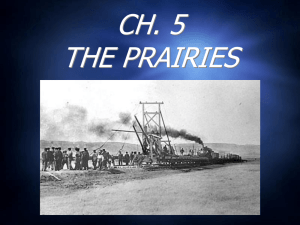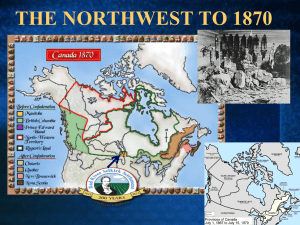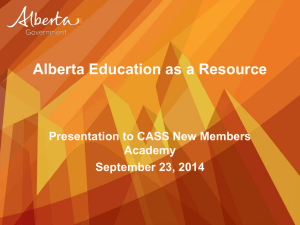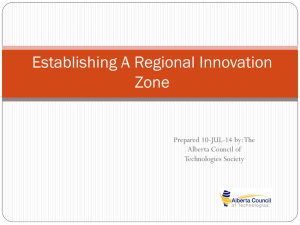Chapter 4 Notes
advertisement
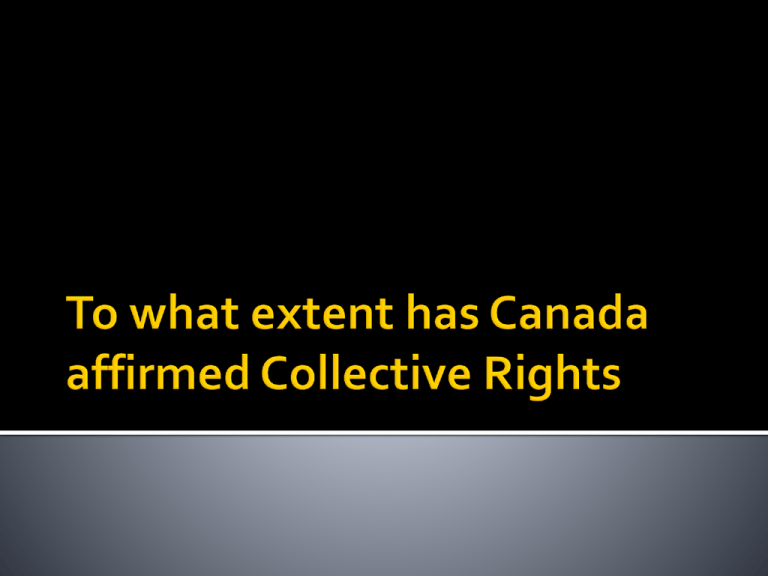
Collective rights are the rights that belong to groups of people and are entrenched (fixed) in Canada’s constitution Collective rights are different from individual rights. Every Canadian citizen and permanent resident has individual rights. Collective rights are rights Canadians have for belonging to one of many groups in society. Who has collective rights? Aboriginal people including First Nations, Métis and Inuit. Francophone and Anglophone The Numbered Treaties The Numbered Treaties are historic agreements that affect the rights and identity of some First Nations in Canada. At the end of the Seven Years War, Britain claimed the lands of North America that France had held in the Royal Proclamation of 1763. At this time Britain recognized First Nations’ rights to land and established the principle of making treaties with First Nations by peaceful negotiation. The Indian Act and Section 35 of the constitution also affect the collective rights of First Nations. The Numbered Treaties were agreements between the Queen and First Nations The First Nations agreed to share their land and resources peacefully The Canadian government agreed to terms which covered First Nations education, reserves, annuities and other matters. The First Nations consider the treaties to be sacred In the west First Nations and Canada negotiated the treaties for many reasons: Canada wanted to build a railroad to BC, as promised when BC joined confederation First Nations and Canada wanted to avoid war First Nations wanted to secure their future The royal Proclamation in 1763 already recognized the rights of First Nations’ to land. Perspective plays a role in the interpretation of the Treaties. the First Nations’ recorded the Treaties orally in their own languages while the Canadian government recorded the Treaties in written English. The oral and written accounts disagree on key aspects of the Treaties The Canadian government believes that the First Nations gave up their land under the treaties Many First Nations disagree since they do not see land as being something anybody can own or give up. The Indian Act is federal legislation related to the rights and status of First Nations peoples (“status Indians”), first passed in 1876 and amended several times. The Indian Act allows the government to develop specific policies and programs to administer treaty rights to First Nations The act confirmed the collective rights of First Nations. The act allowed for the creation of officials for each reserve, “Indian Agents,” who on an individual basis determined how the government would perform its duties. This allowed for several different interpretations of the Treaties. The Indian Act was created by the Canadian government without consulting the First Nations people. The act determines who can be registered as a “status Indian” with treaty rights. The act was originally intended to assimilate First Nations people: The act determined how First Nations people were to conduct their affairs The act at certain points in history restricted the movement of First Nations as well as their ability to take political action, to wear traditional dress, and to be a part of traditional ceremony. Until 1960, First Nations had to give up their status and Treaty rights in order to vote. Pressure from First Nations caused the Canadian government to amend the act which is still in force today. In 2002 First Nations people rejected the government’s attempt to update the Indian Act. In the Charter, French and English are identified as the two official languages of Canada in section 16 to 20. The Charter also guarantees Canadians the right to conduct any interactions with the federal government in either official language. The Charter also identifies New Brunswick as the only officially bilingual province. The Charter also guarantees that a French-speaking or English-speaking minority group of sufficient size has the right to publicly funded schools in their language under section 23. Confederation in Canada, under the British North American (BNA) Act, established the rights of Francophones and Anglophones. Confederation determined Canada as bilingual and bicultural country. They were founding peoples. BNA 1867 Confederation made French and English the official languages of parliament. Confederation guaranteed the rights of Protestant minorities in Quebec and Catholic minorities in all other provinces the right to public schools. This religion based right followed the language divisions at the time of confederation in which “rest of Canada” was Ontario, Nova Scotia, and New Brunswick. When Manitoba entered Confederation in 1870, it was a bilingual province with publicly funded Catholic schools for the Francophone community and Protestant schools for Anglophones. In 1890 the Manitoba School Act abolished public funding for Catholic schools and made Manitoba officially an English-only province. Prior to Alberta becoming a province it was part of the North West Territories which was bilingual and had publicly funded Catholic and Protestant schools. In 1892, Frederick Haultain, the premier of the territory, proposed that the proceedings of the territory assembly were conducted in English. Haultain’s proposal was passed by the assembly in 1892 as the Haultain Resolution. Ordinance Number 22, also in 1892, required English as the language of instruction in schools. With the inclusion of the Charter of Rights and Freedoms in the constitution in 1982 led to the development of Francophone schools and school boards. There are currently more than 25 Francophone school boards, 5 of which are in Alberta which includes Alberta’s 26 publicly funded Francophones schools. In 1977, Bill 101, the charte de la langue francais, was put forth in Quebec. The bill set forth that French-speaking people are a distinct people with French being the language that expresses their identity. The bill also set forth that the people of Quebec wanted the language of government, and everyday work, education and business to be French. Prior to the Charter, commercial signs in Quebec were in French only and Francophones and immigrants had to attend Francophone schools. Section 23 of the Charter determined freedom of expression and equality rights. In 1988 the Supreme Court ruled that the law can require signs to be in French but could not prohibit the use of English in addition. The law can also require that the French is more prominent than English. In 2005 the Supreme Court ruled that it was in violation of section 23 of the Charter for Francophone parents to educate their children in Anglophone schools in Quebec since section 23 protects the rights of Francophones as a minority culture. The Supreme Court also determined that immigrants do have the right to educate their children in Anglophone schools in Quebec if their children have already received education in English. The Red River Resistance led by the Metis resulted in Manitoba Act. The act determined Manitoba as a bilingual province with education rights for Protestants and Catholics. The act also confirmed Metis land rights. The act guaranteed the Metis 500 000 hectares of land as well as the farms they had already built along the Red River. In 1875 to 1879, the Canadian government issued scrip to the Metis. The scrip was a document that the could be exchanged for land. Srips were issued as opposed to establishing Metis land in Manitoba. The Metis were sometimes given the choice of accepting the scrip or become “Treaty Indians” under a Numbered Treaty. The Canadian government did not see the Metis as having the same rights to land as the First Nations. The Metis disagree and believe the Metis have rights to land as an Aboriginal people. In 1885 the Northwest Rebellion tried to protect Metis land in modern day Saskatchewan as the railway and settlers moved west. 1896-1910, Metis farms were established at St. Paul des Metis on land provided by the Catholic Church. The Metis however did not have title to the land and had to move when the settlement closed. In 1938, L’Association des Metis de l’Alberta et des Territories du Nord-Oust lobbied the Alberta government for Metis land. In 1938 the Metis Population Betterment Act was passed by Alberta’s government establishing twelve temporary Metis settlements. This was the first time a government had granted land to the Metis. The settlements did not give control of the land to the Metis and when the settlements were found to be unsuitable for farming, hunting and fishing the settlements went back to the Alberta government. In 1982, the Metis lobbied for inclusion in the Charter. Section 35 recognizes the Metis as Aboriginal peoples. In 1990 the Alberta government put forth legislation in which the Metis received settlements as permanent land base with the right to manage their own affairs. The legislation included: Constitution of Alberta Amendment Act Metis Settlement Accord Implementation Act Metis Settlements Act Metis Settlements Land Protections Act The Alberta government also established the Metis’ right to participate in the development of oil and gas resources on settlement lands. In 2003, the Supreme Court ruled that the Metis have the right to hunt and fish as one of Canada’s Aboriginal peoples under the constitution. In 2004, the Metis Settlement General Council and Metis Nation of Alberta developed agreements with the Alberta government recognising Metis hunting and fishing rights. In 2007, the Alberta government put restrictions on these rights without consulting the Metis organizations. In 2006, Metis in Manitoba started a court case seeking compensation for land promised in the Manitoba Act.
